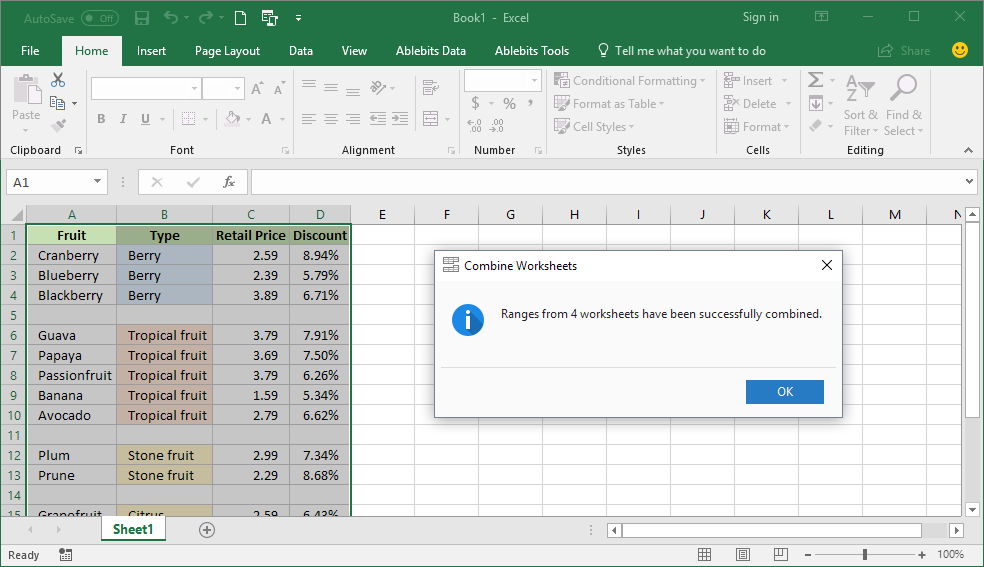5 Ways to Merge Sheets in Excel 2007 Easily

Merging sheets in Excel 2007 can be a lifesaver for anyone working with large datasets or multiple Excel files that need consolidation. Whether you're an accountant, a data analyst, or just someone who loves organizing data, learning how to efficiently merge sheets can significantly enhance your productivity. In this detailed guide, we'll explore five methods to merge sheets in Excel 2007, making your life easier and your data management more streamlined.
Method 1: Using Paste Special

The simplest and perhaps the most commonly used method for merging sheets is through the Paste Special feature. Here’s how to do it:
- Open both Excel workbooks.
- In the source workbook, select all the cells or the range you wish to copy.
- Right-click and choose Cut or Copy.
- Go to the destination workbook, select the cell where you want to merge data, and right-click.
- Choose Paste Special from the context menu.
- Select Values if you want to paste only the cell values, or choose other options like Formats, Formulas, or All depending on your needs.

This method is quick but keep in mind that it doesn’t handle overlapping data or automatic linking between sheets.
Method 2: Excel Consolidate Tool

For more complex merging needs, especially when you want to consolidate data from multiple sources, Excel’s Consolidate Tool is a powerful option:
- Select the cell where you want the consolidated data to appear in your destination sheet.
- Navigate to the Data tab on the Ribbon.
- Click on Consolidate.
- Choose the function you want to use for consolidation, like Sum, Average, etc.
- Add references to the source ranges by clicking Add and selecting the ranges from different sheets or workbooks.
- Check Top row or Left column if your data has labels to match up data correctly.
- Click OK to complete the merge.
| Consolidation Function | Usage |
|---|---|
| Sum | Best for numeric data to calculate totals. |
| Average | Ideal for finding mean values across sheets. |
| Count | Counts the number of non-empty cells. |

⚠️ Note: Excel Consolidate can handle only limited sizes of data. If you have large datasets, consider splitting the consolidation into smaller parts.
Method 3: VBA Macro

If you’re comfortable with VBA, you can automate the merging process with a macro:
- Open the Visual Basic Editor by pressing Alt + F11.
- Insert a new module.
- Copy and paste the following code:
Sub MergeSheets() Dim sourceWb As Workbook, destWb As Workbook Dim wsSource As Worksheet, wsDest As Worksheet Dim lastRow As Long, lastCol As LongSet sourceWb = Workbooks.Open("C:\Path\To\Source\Workbook.xlsx") Set destWb = Workbooks("YourDestinationWorkbook.xlsx") For Each wsSource In sourceWb.Worksheets lastRow = wsSource.Cells(wsSource.Rows.Count, "A").End(xlUp).Row lastCol = wsSource.Cells(1, wsSource.Columns.Count).End(xlToLeft).Column Set wsDest = destWb.Worksheets.Add wsDest.Name = wsSource.Name wsSource.Range("A1", wsSource.Cells(lastRow, lastCol)).Copy wsDest.Range("A1") Next wsSource sourceWb.Close FalseEnd Sub - Adjust the file paths and names as needed.
- Close the VBA editor and run the macro by pressing Alt + F8 and selecting MergeSheets.
💡 Note: VBA macros can handle very complex operations, but they require Excel to enable macros and can be a security risk if sourced from untrusted places.
Method 4: Power Query

Power Query is Excel’s powerful data manipulation tool, which can be used to merge sheets:
- Go to the Data tab and click on Get External Data > From Other Sources > From Microsoft Query.
- Select Excel Files and choose your source workbook.
- Combine data from multiple sheets using the Append Queries option.
- Close and Load the merged data into your Excel workbook.
Power Query provides an intuitive interface for data shaping and merging, making it perfect for repetitive and complex data transformations.
Method 5: Add-ins

There are several add-ins available for Excel that simplify the process of merging sheets:
- Excel-Tool Merge: Offers a simple interface to select source sheets and a destination workbook to merge data.
- XL Automation Add-ins: Provides advanced merging functions like scheduled merges, data validation, and reporting tools.
- Merge Excel Files Add-in: A straightforward tool for merging worksheets from different Excel files with minimal configuration.
📌 Note: Always ensure that the add-ins you install are from reputable sources to avoid security issues.
In the digital age, mastering tools like Excel can drastically reduce the time spent on data manipulation and increase productivity. By understanding how to merge sheets in Excel 2007 using these five methods, you're now equipped to handle various data consolidation tasks. Each method offers unique advantages, catering to different needs:
While Paste Special and Excel Consolidate Tool are easy to use for basic to intermediate merging tasks, VBA macros provide an avenue for more complex, automated solutions. Power Query stands out for its data transformation capabilities, and add-ins like Excel-Tool Merge provide user-friendly options for quick merges.
Remember, the choice of method depends on your specific requirements, the complexity of your data, and your familiarity with Excel. With these techniques, not only can you streamline your workflow, but you also ensure that your data remains consistent and easy to manage, allowing you to focus on more strategic tasks.
What’s the easiest method to merge sheets for beginners?

+
The easiest method for beginners would be the Paste Special technique, as it requires no complex functions or tools.
Can I automate the merge process?

+
Yes, by using VBA macros or Power Query, you can automate the process of merging sheets, especially for repeated tasks.
How do I handle data conflicts when merging sheets?

+
When merging sheets, conflicts can be managed by choosing the correct consolidation function or using Power Query to match and transform data appropriately.



